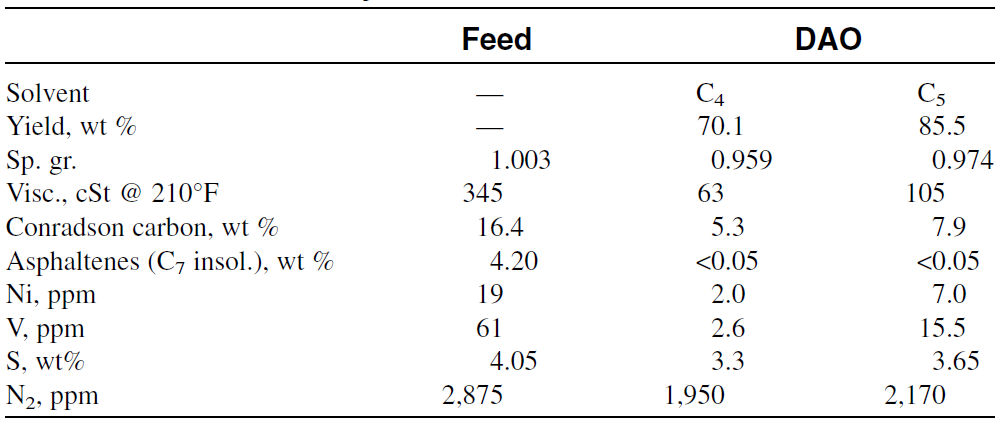


 علم الكيمياء
علم الكيمياء 
 الكيمياء التحليلية
الكيمياء التحليلية 
 الكيمياء الحياتية
الكيمياء الحياتية 
 الكيمياء العضوية
الكيمياء العضوية 
 الكيمياء الفيزيائية
الكيمياء الفيزيائية
 الكيمياء اللاعضوية
الكيمياء اللاعضوية 
 مواضيع اخرى في الكيمياء
مواضيع اخرى في الكيمياء
 الكيمياء الصناعية
الكيمياء الصناعية |
Read More
Date: 11-9-2017
Date: 31-8-2017
Date: 24-7-2017
|
SOLVENT EXTRACTION
Liquid solvents are used to extract either desirable or undesirable compounds from a liquid mixture. Solvent extraction processes use a liquid solvent that has a high solvolytic power for certain compounds in the feed mixture. For example, ethylene glycol has a greater affinity for aromatic hydrocarbons and extracts them preferentially from a reformate mixture (a liquid paraffinic and aromatic product from catalytic reforming). The raffinate, which is mainly paraffins, is freed from traces of ethylene glycol by distillation. Other solvents that could be used for this purpose are liquid sulfur dioxide and sulfolane (tetramethylene sulfone).
The sulfolane process is a versatile extractant for producing high purity BTX aromatics (benzene, toluene, and xylenes). It also extracts aromatics from kerosines to produce low-aromatic jet fuels. On the other hand, liquid propane also has a high affinity for paraffinic hydrocarbons. Propane deasphalting removes asphaltic materials from heavy lube oil base stocks. These materials reduce the viscosity index of lube oils. In this process, liquid propane dissolves mainly paraffinic hydrocarbons and leaves out asphaltic materials. Higher extraction temperatures favor better separation of the asphaltic components. Deasphalted oil is stripped to recover propane, which is recycled.
Solvent extraction may also be used to reduce asphaltenes and metals from heavy fractions and residues before using them in catalytic cracking. The organic solvent separates the resids into demetallized oil with lower metal and asphaltene content than the feed, and asphalt with high metal content. Figure 1-1 shows the IFP deasphalting process and Table 1-1 shows the analysis of feed before and after solvent treatment.
Table 3-2: Typical analysis of light Arabian vacuum resid before and after solvent treatment using once C4 and another C5 hydrocarbon solvent


Figure 3-2. The IFP deasphalting process:4 (1,2) extractor, (3 6) solvent recovery towers.
Solvent extraction is used extensively in the petroleum refining industry. Each process uses its selective solvent, but, the basic principle is the same as above.



|
|
|
|
4 أسباب تجعلك تضيف الزنجبيل إلى طعامك.. تعرف عليها
|
|
|
|
|
|
|
أكبر محطة للطاقة الكهرومائية في بريطانيا تستعد للانطلاق
|
|
|
|
|
|
|
أصواتٌ قرآنية واعدة .. أكثر من 80 برعماً يشارك في المحفل القرآني الرمضاني بالصحن الحيدري الشريف
|
|
|